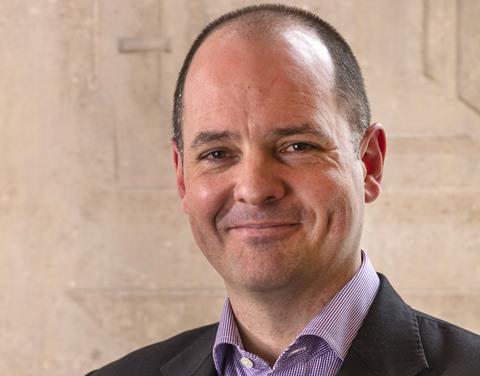Institute voluntarily reveals its figures and issues call to arms for SMEs to follow suit

RIBA has called on the architecture sector to exceed current government requirements on pay transparency and publish data on differentials between male and female staff regardless of company size.
Under new requirements made under the Equality Act 2010, firms with 250 employees or more need to publish a gender-specific breakdown of mean and median hourly rates of pay, and bonus details.
While architecture sector giants including Foster & Partners, Zaha Hadid Architects and BDP have complied – revealing average hourly pay discrepancies of up to 29.5% in the latter’s case, the vast majority of UK practices employ fewer than 250 staff and are therefore exempt from reporting.
But today RIBA chose to voluntarily publish its own equal pay data and called on small and medium-sized firms to do the same, in a move likely to be seen as an acceptance that gender-related pay differences are an issue the whole sector needs to get to grips with.
RIBA’s figures show that the average hourly rate of pay for female staff was 14.6% lower than for male counterparts on the “snapshot date” in April 2017, while the difference in median rates was 4.05% lower. The institute said no staff were paid bonuses.
RIBA President Ben Derbyshire said he was “proud” to represent an organisation that was leading by example and voluntarily sharing its gender-pay data and analysis.
“I encourage practices with fewer than 250 staff to follow suit, and publish their data,” he said.
“The RIBA executive and trustees are focused on ensuring our institute is in the best possible shape to give our members the support they need to succeed now and in the future – diverse and talented staff are absolutely key to achieving this.”

RIBA chief executive Alan Vallance said that the while the organisation’s gender-pay data compared favourably to the national average, it was recognised that there was room for improvement. He noted that 63% of the organisation’s staff were female, but men were “currently overrepresented” in senior roles.
While RIBA is adamant that it “did not employ more than 250 staff” on the snapshot date, the institute may only have avoided the requirement to comply with Equality Act obligations by a slim margin.
According to RIBA’s annual report for 2016, which covered the year to 31 December, RIBA employed 496 staff, 245 of whom were employed by the RIBA 1834 company and 251 by RIBA Enterprises.
Data for RIBA Enterprises showed female staff received an average hourly rate that was 16.2% lower than their male counterparts, while the median difference was 12.9%.
Unlike their RIBA 1834 counterparts, 89% of female staff at RIBA Enterprises and 91% of men received a bonus. Women’s average bonus pay was 11.1% lower than that of men, the difference in median bonus pay was 17.8%.
In addition to around one dozen architectural practices who have so far published gender-pay figures under the government’s requirements, the Building Research Establishment and the Architectural Association have also produced data.
The BRE data said female staff received an average hourly pay rate that was 24.8% lower than men, while the median difference was 21.8%.
Proportionately, BRE’s female employees were more likely to receive a bonus than men – with 7.2% of women recorded as receiving a bonus in the year to the organisation’s snapshot date against 5.4% of men.
However the average bonus paid to women was 8.7% lower than that paid to male counterparts. The median difference was given as “0%”.
At the Architectural Association, women received an average hourly rate that was 2.6% lower than their male counterparts, but the median difference was “0%”.
As with BRE, women were proportionately more likely to receive bonuses, with 46% of female employees getting such a reward against 29.3% of men.
Women’s average bonus pay was described as 116% higher than that of male counterparts, the median difference was described as “0%”.













3 Readers' comments